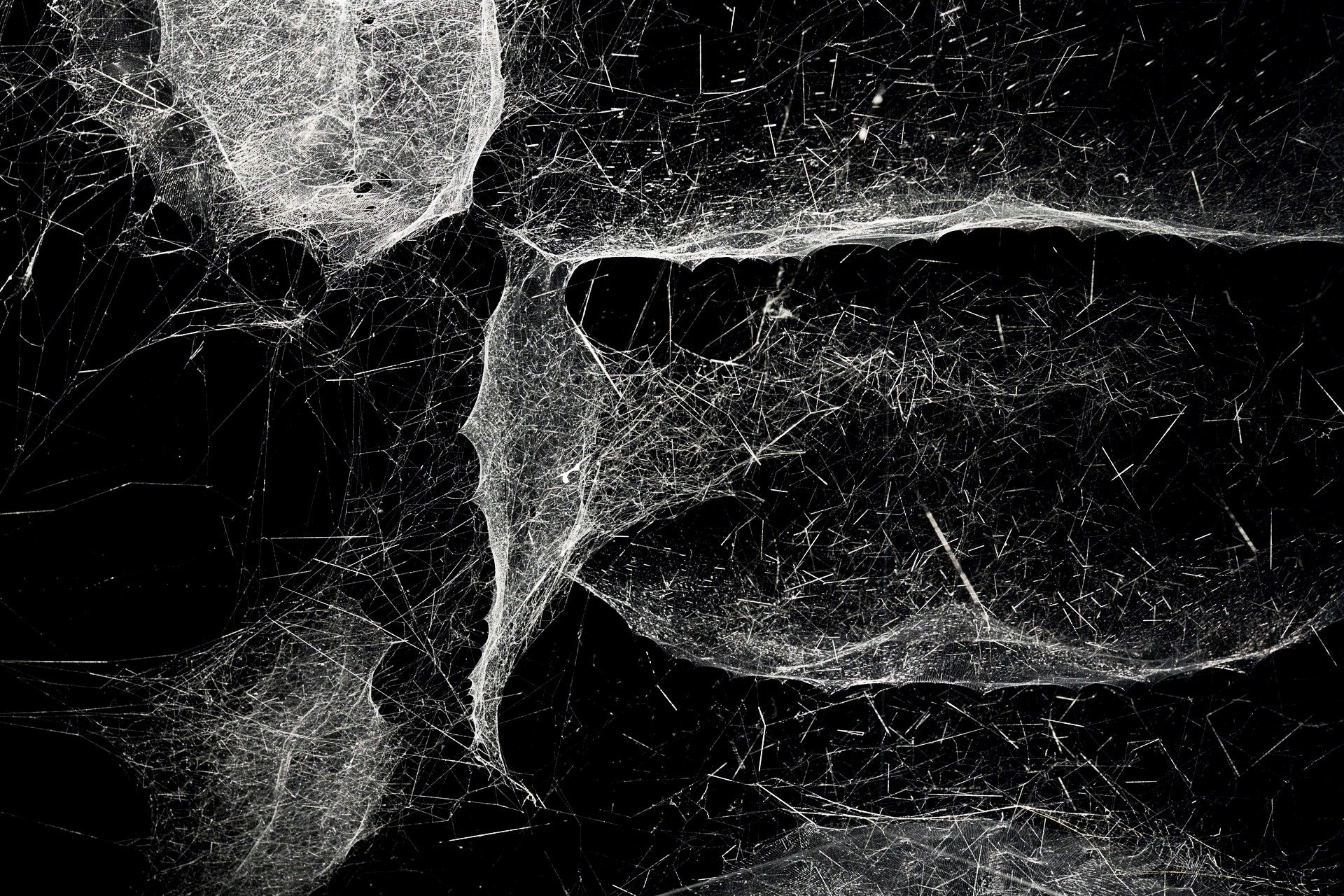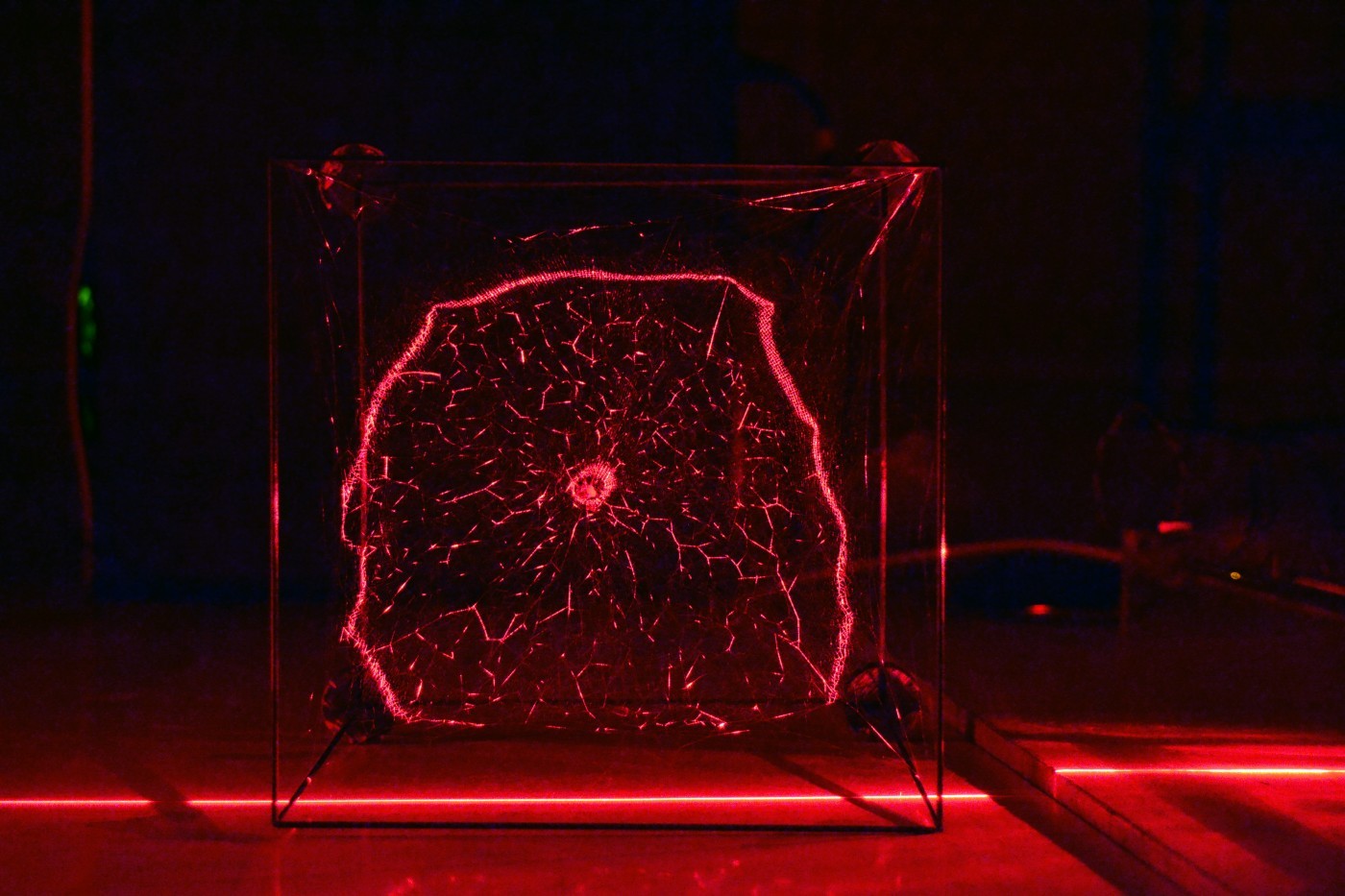A group of MIT scientists reported that they could transform spider’s silk threads into musical instruments. The long-standing experiment involves an innovative method that uses data sonification to convert 3D scans of the complex geometries of spider webs into music. Ultimately, the experts hope to communicate with spiders using artificial intelligence (AI) – much like a speech synthesis interface – learning the “words” generated by the spiders and using them as signals to speak with them. The work also shows great potential for translation applications, ranging from smarter 3D printers to self-repairing biomaterials, cross-species communication, and otherworldly musical compositions.
Led by McAfee Professor of Engineering Markus Buehler, a team of researchers at MIT’s Laboratory for Atomistic and Molecular Mechanics (LAMM) are studying the tangled 3D cobwebs of various spider species, focusing on the development of a new paradigm to enable the design, synthesis, and manufacturing of materials and structures from the molecular scale. Through a combination of microscale 3D printing, computational modeling, and experimental synthesis, the team is uncovering the “webmasters’ secrets,” as they like to call it.
According to Buehler, spider webs are intricate material systems that feature hierarchical structures that range from the chemistry of proteins to the complex architecture of filaments in the web.
“Nature has its own orchestra of sounds available,” he said while presenting the research at the spring meeting of the American Chemical Society, held online April 5 through 30, 2021.
So, how does the team go from spider webs to computer models to sound? Since most spiders build complex, 3D webs, Buehler developed a method with contemporary artist Tomás Saraceno and other collaborators to scan them using lasers that capture 2D cross-sections. Then, computer algorithms reconstruct the web’s 3D network from thousands of images taken from different angles. MIT graduate student Isabelle Su created a technology to automatically process the images and transform them into a 3D model. The researchers then created a harp-like instrument and played spider web music in several live performances worldwide, including in Paris.

The “Spider’s Canvas”. In 2019, spider webs were making music in Paris at MIT visiting artist Tomás Saraceno’s Palais de Tokyo art exhibit, ON AIR. Image courtesy of MIT/Tomás Saraceno.
Accurate composite 3D models of the webs show thousands of individual strings, which reminded the scientists of a harp or string instrument. Each of the little strings can vibrate, and in fact, the spiders use the vibrations during the operation of the web for catching prey or collecting sensory information. Su created a virtual reality environment that allowed people to visually and audibly “enter” the web and “wander” around its structure.
Focused on trying to get people to hear and see the web simultaneously and understanding the spider’s habitat, Su used physics-based simulation to calculate how the individual string fragments would vibrate and made them audible, even capable of being plucked like a guitar string to alert the spiders to movement within the cobweb. The sounds generated are unconventional, almost eerie but beautiful, like falling into a supernatural dimension, especially as the web gets denser and the sounds become more complex.
“We have been tempted to experience the world as the spider does,” described Buehler.
Different species of spiders produce different web designs, and thereby different sounds. The team chose spiders that make big 3D webs. Each string has its own equation associated with it, and the sound is created by moving around the web and exciting a couple of strings at a time, with each region of the web revealing a particular sound.
The researchers stated they like to experiment with the most disorganized and random regions. Buehler, who has long been interested in music, is keen on using the web to extract new rhythms and melodies of non-human origin from natural materials. He considered webs as a new source for musical inspiration that is very different from the usual human experience. Besides, by encountering a web through hearing and vision, the researchers hope to gain new insights into 3D architecture and web construction.
The experiment is a way of creating interesting sounds based on real objects.
“The spider harp is not tuned to sound beautiful, it’s tuned to the spider to be an effective catcher, collect information on the environment,” described Buehler.
Geometrically complex, the webs are a universal way for the spiders to unlock information. Spiders live in an environment of vibrating strings. They don’t see very well, so they sense their world through vibrations, which have different frequencies. Such vibrations occur, for example, when the spider stretches a silk strand during construction or when the wind or a trapped fly moves the web. Spiders will tap the web and use the vibrations to localize and communicate with other spiders.
To gain insights into how spiders build webs, the researchers scanned a web during the construction process, transforming each stage into music with different sounds.
“The sounds our harp-like instrument makes change during the process, reflecting the way the spider builds the web,” said the expert. “So, we can explore the temporal sequence of how the web is being constructed in audible form. This step-by-step knowledge of how a spider builds a web could help in devising spider-mimicking 3D printers that build complex microelectronics. Buehler considers spiders as really interesting “autonomous 3D printers,” that can essentially construct webs just like a 3D printer does but without any support material or scaffolding.
A few years ago, the team turned to microscale 3D printing to create spiderweb mimics composed of elastomeric filaments to investigate the mechanical response of elastomeric webs under multiple loading conditions. More recently, one of the students at LAMM used web segments to simulate a footbridge model and hopes to build a prototype once the pandemic subsides.
Additionally, they highlighted the relevance of the silk material used by spiders as stronger and less brittle than steel and among the toughest known. Their work at MIT has already unraveled some of the deepest secrets that could lead to the creation of synthetic materials that duplicate or even exceed the extraordinary properties of natural silk. Trying to understand the complex structures created in 3D space is one of the objectives of the research. Changing the paradigm of how to think about materials is also important.
Buehler suggested that spiders teach scientists a lot about the chemistry and sustainability of materials and how to make materials with superior functions: “We can imagine creating a synthetic system that mimics the spider and future materials that would have a repair mechanism incorporated.”
Eventually, the scientists hope to communicate with spiders in their own language. They recorded web vibrations produced when spiders performed different activities, such as building a web, communicating with other spiders, or sending courtship signals. Although the frequencies sounded similar to the human ear, a machine learning algorithm correctly classified the sounds into different activities. Now they are trying to generate synthetic signals to speak the language of the spider basically. They wonder if exposing them to certain patterns of rhythms or vibrations will affect what they do and begin to communicate with them.

The experts say, forget about 2D spider webs. Tomás Saraceno and Markus Buehler show the intricate geometry of spider webs with new scanning instruments, 3D models, and 3D printers, digitizing 3D webs.
Subscribe to Our Email Newsletter
Stay up-to-date on all the latest news from the 3D printing industry and receive information and offers from third party vendors.
Print Services
Upload your 3D Models and get them printed quickly and efficiently.
You May Also Like
Heating Up: 3D Systems’ Scott Green Discusses 3D Printing’s Potential in the Data Center Industry
The relentless rise of NVIDIA, the steadily increasing pledges of major private and public investments in national infrastructure projects around the world, and the general cultural obsession with AI have...
3DPOD 260: John Hart on VulcanForms, MIT, Desktop Metal and More
John Hart is a Professor at MIT; he´s also the director of the Laboratory for Manufacturing and Productivity as well as the director of the Center for Advanced Production Technologies....
Etsy Design Rule Change Reduces Selection of 3D Printed Goods
Online marketplace Etsy has implemented a rule change requiring all 3D printed goods on the site to be original designs. The update to the site’s Creativity Standards states, ¨Items produced using...
E-Beam OEM Wayland Additive Partners with USC Racing to 3D Print Titanium Exhaust Collector
Every year, standards organization SAE International holds a competition called Formula SAE, in which students from both undergraduate and graduate programs design, build, and race small formula-style race cars. For...


































